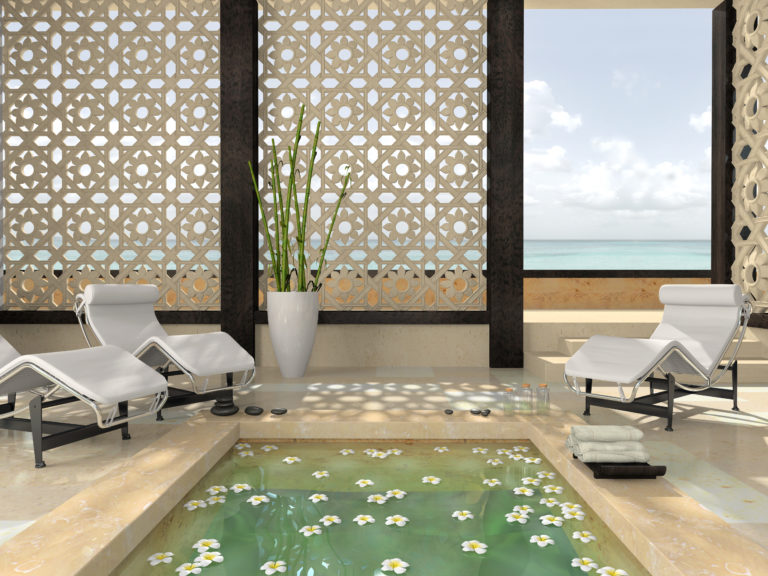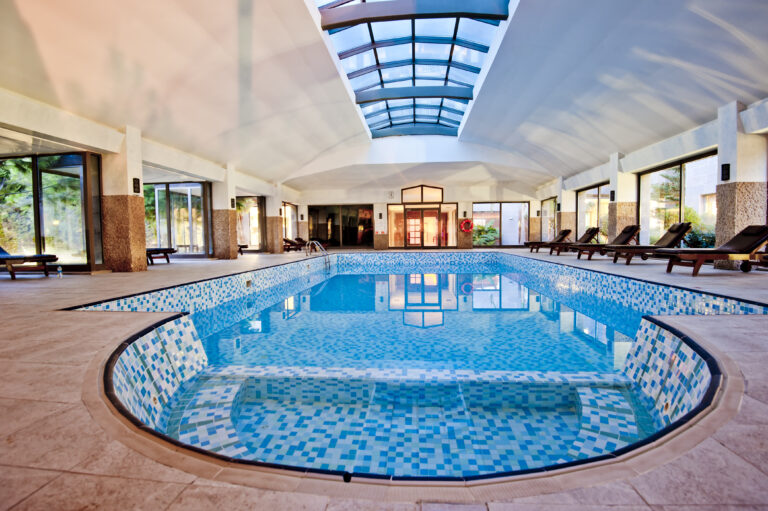Hot Tubs vs Integrated Spas Which is Right for Your Pool Design
You’re planning your dream pool design and can’t decide between a hot tub or an integrated spa. It’s a big decision, and you’ve got to get it right.
You’ll need to consider factors like cost, maintenance, and overall aesthetic.
In this article, we’ll compare these options head-to-head so you can confidently make the best choice for your backyard oasis.
Dive in!
Understanding Hot Tubs and Integrated Spas
Let’s delve into the specifics of hot tubs and integrated spas to help you decide which is best for your pool design.
First off, it’s important to understand that both options have their unique benefits and challenges.
Hot tubs are standalone units that can be placed virtually anywhere in your outdoor space. However, they come with their own set of installation challenges. They require a solid foundation, dedicated electrical wiring, and adequate access points for maintenance. It’s not just about plopping them down wherever there’s room!
On the other hand, spa integration methods offer seamless blending with your existing pool layout. Designed as an extension to your swimming area, these spas give an aesthetic appeal that complements the overall design of your backyard oasis. Their main advantage lies in convenience – no need to leave the pool area for a quick dip into warm water relaxation.
However, spa integration isn’t always straightforward either. You’ll need careful planning regarding plumbing connections and heating systems.
So whether you’re leaning towards a separate hot tub or going for an integrated spa setup – remember; each comes with its own set of considerations from installation challenges to integration methods.
Key Features of Hot Tubs in Pool Design
You’re probably curious about the main characteristics of these heated baths in a swimming area layout. Well, hot tubs can significantly enhance your pool design with their unique aesthetics and therapeutic benefits.

Hot tub aesthetics involve more than just a fancy look. They’re designed to blend seamlessly into your pool landscape, often incorporating natural elements like stone and wood. The right aesthetic can create an inviting atmosphere that encourages relaxation.
Now, let’s talk hydrotherapy benefits. Hot tubs aren’t just for lounging; they also offer health advantages. Hydrotherapy can help reduce stress, soothe sore muscles, and provide relief from arthritis pain.
Here’s a quick table summarizing some key features:
| Feature | Aesthetic Impact | Hydrotherapy Benefit |
| LED Lighting | Enhances ambiance during night swims | N/A |
| Jet Placement | Not visible but adds to overall design | Targets different muscle groups |
| Built-In Seating | Creates comfortable lounging spaces | Allows for full body immersion |
Benefits of Integrated Spas in Pool Design
Incorporating a spa into your swimming area layout isn’t just about luxury; it’s also about the practical benefits they offer. Integrated spas not only enhance the overall pool design with their superior spa aesthetics but also bring numerous health benefits.
Here are a few reasons why you should consider integrating a spa into your pool:
– Enhanced Aesthetics: The seamless integration of a spa elevates the visual appeal of the pool.
– Health Benefits: Warm water therapies can help alleviate stress and soothe sore muscles.
– Year-Round Use: Unlike pools, heated spas can be used all-year-round, regardless of the weather.
– Increased Property Value: An integrated spa could potentially add value to your property.
– Social Aspect: It provides an intimate space for family gatherings or fun time with friends.

Choosing Between a Hot Tub and an Integrated Spa: Factors to Consider
You’re considering the addition of a spa to your pool design, but you’re torn between a hot tub and an integrated spa.
Let’s dive into the key factors that could influence your decision: cost analysis, space requirements, and differences in maintenance.
We’ll break down these elements so you can make an informed choice that fits your budget, space, and long-term upkeep expectations.
Cost Analysis
When it comes to your wallet, you’ll find that hot tubs are generally less expensive than integrated spas. However, you shouldn’t forget to consider the long term investment. Although a hot tub’s initial cost may be lower, its overall maintenance can add up over time. On the other hand, while an integrated spa might have a heftier price tag upfront, it often proves more durable and requires less upkeep in the long run.
The installation process is another factor impacting the cost. You’ll find installing a hot tub is usually quicker and easier, which means fewer labor costs. An integrated spa tends to take longer and require more hands on deck, making it pricier but potentially adding value to your property.
Space Requirements
It’s important to consider the amount of space you have available before deciding on any type of water feature for your backyard. You don’t want to crowd your outdoor haven with a hot tub or integrated spa that overwhelms the area.
When assessing space requirements, take into account:
1. The size of the actual unit: Does it fit comfortably in your chosen spot?
2. Accommodation for installation process: Is there enough room for equipment and technicians during setup?
3. Zoning regulations: Are there specific rules about where you can place these features?
Misjudging the dimensions could complicate installation and even violate zoning regulations, spoiling your relaxation plans. So, measure twice, install once and enjoy without worries!
Maintenance Differences
Maintenance differences between various water features can’t be overlooked, as they’ll significantly impact the overall cost and effort. When it comes to hot tubs vs integrated spas, you’ll find that spa longevity and energy efficiency play crucial roles in maintenance costs.
Hot tubs tend to require more regular upkeep due to their standalone nature. You’re responsible for maintaining water quality, temperature, and sanitization which can add up over time.
Integrated spas, on the other hand, share these responsibilities with your pool system. This often results in lower energy consumption and increased spa longevity.
Therefore, while hot tubs may offer a quick setup solution, integrated spas might prove more cost-effective in the long run due to their superior energy efficiency and durability. Ultimately though, your choice will depend on personal preference and budget considerations.
Case Studies: Successful Pool Designs With Hot Tubs and Integrated Spas
You’ll find plenty of inspiration in these case studies showcasing successful pool designs with both hot tubs and integrated spas. These examples will show how spa aesthetics and functionality can complement your pool design.
The first case is a luxury resort that features an infinity-edge pool with an integrated spa. The spa’s seamless design creates a stunning aesthetic, making it look like it’s part of the pool rather than an add-on. Functionally, the heated water from the spa also helps to warm up the main pool.

In contrast, a family-friendly community center opted for a separate hot tub alongside its large swimming pool. This provides additional functionality as different temperatures can be set for each facility, catering to various user preferences.
Check out this quick comparison:
| Design | Benefits |
| Integrated Spa | Seamless aesthetic; shared heating system |
| Separate Hot Tub | Allows different temperature settings |
Remember: whether you go for a hot tub or an integrated spa depends on what you value more – unity in design or flexibility in use. Each option has its own benefits and appeals to different lifestyles and preferences.
Making Your Decision: Hot Tub or Integrated Spa?
You’re probably wondering, hot tub or integrated spa – which will be the best fit for your dream pool?
Let’s delve into the key aspects you need to consider before making a decision.
We’ll compare costs and maintenance requirements, helping you weigh up the pros and cons of each option.
Comparing Costs”
When it comes to comparing costs, it’s essential to consider both the initial purchase price and long-term expenses of hot tubs versus integrated spas. Financial implications can’t be ignored in your budget planning.
– Hot Tubs
– Initial Purchase: Less expensive upfront.
– Long-Term Expenses: Higher due to separate cleaning and maintenance.
– Integrated Spas
– Initial Purchase: More costly initially.
– Long-Term Expenses: Lower as they are part of the pool’s filtration system.
Maintenance Requirements
Now that we’ve tackled costs, let’s dive into the maintenance requirements for hot tubs and integrated spas. It’s crucial to understand how each option differs in terms of chemical balancing and cover usage.
| Hot Tubs | Integrated Spas | |
| Chemical Balancing | You’ll need to regularly check and adjust the water’s chemical balance. Regular testing is essential to maintain a safe environment. | With an integrated system, you can have automatic chemical feeders that keep your spa perfectly balanced without much effort on your part. |
| Cover Usage | Covers are vital for hot tubs to preserve heat, reduce evaporation, and keep debris out. They require routine checks for wear and tear.| In integrated spas, covers often come with automated systems making them easier to use and maintain.
Frequently Asked Questions
What Are the Average Costs of Installing a Hot Tub Versus an Integrated Spa in a Pool Design?
Considering costs, you’ll find hot tubs typically cheaper to install than integrated spas. However, weigh this against energy efficiency differences and hot tub accessibility before making your final decision.
Are There Any Specific Maintenance Requirements for Hot Tubs and Integrated Spas?
Yes, both hot tubs and integrated spas require regular maintenance. You’ll need to ensure chemical balancing for clean water and upkeep the tub durability through periodic inspections for leaks or damage.
How Does the Installation Process of a Hot Tub Compare to That of an Integrated Spa?
Comparing installation processes, hot tubs typically have quicker durations but require more space. Integrated spas, on the other hand, take longer to install but fit seamlessly within your existing pool design.
Can a Hot Tub Be Converted Into an Integrated Spa at a Later Stage, or Vice Versa?
You can’t easily convert a hot tub into an integrated spa, or vice versa. Each offers unique spa benefits and tub aesthetics that are best considered at the design stage for optimal satisfaction.
Are There Any Safety Concerns or Precautions Homeowners Should Be Aware of When Installing a Hot Tub or Integrated Spa?
Sure, safety concerns exist! You’ve to consider the installation location for both. Avoid slippery surfaces and ensure secure access. Remember, while enjoying the health benefits, never leave kids unattended near them.








